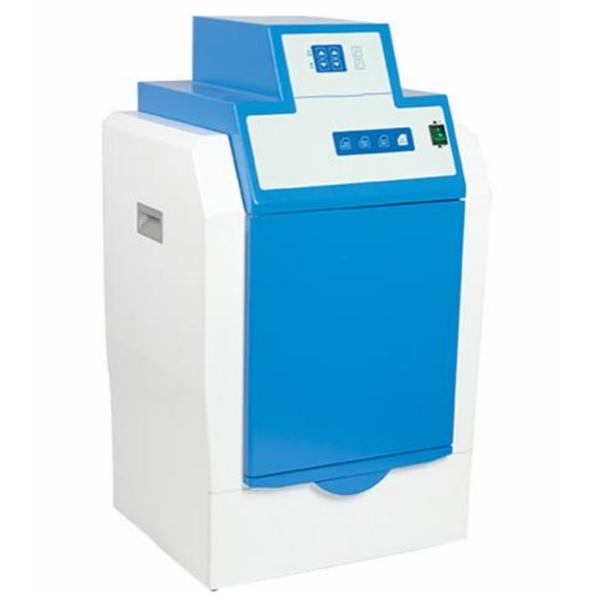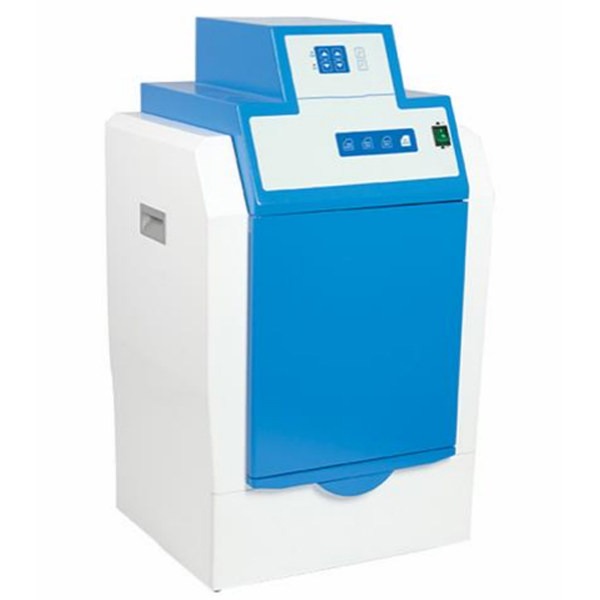The UV gel documentation system is essential in the fields of molecular biology, genetics, and biochemistry for seeing and collecting photographs of nucleic acids and proteins separated by electrophoresis. This cutting-edge laboratory instrument has transformed the way scientists assess and document their research. In this article, we’ll look at the UV gel documentation system’s key components, functions, and importance in scientific research.

What are the Key Components of A UV Gel Documentation System?
A UV gel documentation uses ultraviolet (UV) light to illuminate and capture photographs of separated molecules, offering scientists important information on the size, quantity, and purity of their samples. Let’s take a deeper look at the UV Gel documentation system’s core components and features.
- UV Light Source
The UV gel documentation system is equipped with a UV light source, usually a UV lamp, which emits ultraviolet light at specific wavelengths, typically 254 nm or 365 nm. This UV light is used for the excitation of fluorescent molecules in the gel.
- Transilluminator
The transilluminator is the platform on which the imaging gel is mounted. It often has a UV-transparent surface that allows UV light from below to flow through the gel. For imaging, the gel and samples on it are placed directly on the transilluminator.
- Imaging System
The imaging system consists of a high-resolution camera, usually a CCD (charge-coupled device) camera, as well as a lens system. The UV-induced fluorescence generated by the labeled molecules in the gel is captured by this camera.
- Filters
The UV gel documentation System uses filters to select specific wavelengths of UV light for excitation and for capturing fluorescent emissions. Filters help improve the clarity and specificity of the images.
- Software
A major component of the system is specialized software. It gives customers the ability to control the imaging process, change camera settings, and take gel photos. The software also includes picture analysis capabilities such as band and peak measurement, background reduction, and image enhancement.
- Illuminated Gel Tray
Some systems include tools such as gel combs and templates to ensure proper sample placement on the gel. These tools aid in the formation of wells or lanes for putting materials onto the gel.
- Sample Placement Tools
To ensure accurate positioning of samples on the gel, some systems come with tools like gel combs and templates. These tools help create wells or lanes for loading samples onto the gel.
- Touchscreen Interface
Many modern UV Gel Documentation Systems feature user-friendly touchscreen interfaces for easy control and operation, allowing researchers to capture and manage images efficiently.
- Gel Documentation Hood
To protect users from UV radiation during imaging, some systems feature a specific enclosure or hood with UV-blocking glass or shields. When working with ultraviolet light, safety is of the utmost importance.

What are the Functions of A UV Gel Documentation System?
The UV gel documentation system has various roles and wide applications in molecular biology, genetics, and biochemistry. Its adaptability makes it an invaluable resource for academics and experts in these fields.
Visualization of Nucleic Acids
One of the system’s primary uses is to view nucleic acids, such as DNA and RNA, separated in agarose or polyacrylamide gels. It allows scientists to examine the size, amount, and quality of nucleic acid fragments.
Protein Analysis
The system is also used to visualize and analyze proteins segregated by size and charge in polyacrylamide gels used in SDS-PAGE (Sodium Dodecyl Sulfate-Polyacrylamide Gel Electrophoresis).
Fluorescent Detection
To detect specific molecules, researchers utilize fluorescently tagged compounds or stains that generate fluorescence under UV light. This is particularly valuable in applications like Western blotting and gel shift assays.
DNA Fingerprinting
The system is critical for DNA fingerprinting, a technique used in forensic science and genetics to identify people based on their unique DNA patterns. It aids in the visualization of DNA fragments acquired by procedures such as PCR.
PCR Product Verification
Polymerase Chain Reaction (PCR) is a fundamental molecular biology technique. The UV Gel Documentation System certifies PCR reaction success by displaying the presence and size of amplified DNA fragments.
Quantitative Analysis
Nucleic acids and proteins can be quantified using the system’s software. Researchers can use gel pictures to detect the concentration of individual compounds by measuring the strength of bands or peaks.
Genotyping
The technology is used in genotyping studies, which include identifying genetic differences, to view and analyze DNA fragments for the presence of specific alleles or mutations.
Research Documentation
It is an important tool for documenting study findings. Gel pictures are captured by researchers for use in record-keeping, presentations, and research papers.
Quality Control
In laboratories involved in biotechnology and molecular diagnostics, the UV Gel Documentation System is used for quality control checks to ensure the accuracy and integrity of samples.
Why A UV Gel Documentation System is Important in Scientific Research?
The UV gel documentation system has expedited scientific research in molecular biology and related domains greatly.
- Data Accuracy
It provides accurate and reproducible data, eliminating the need for subjective visual interpretation of gel results.
- Time Efficiency
Researchers can quickly capture and document gel images, saving valuable time in the laboratory.
- Quantitative Analysis
It enables precise quantification of nucleic acids and proteins, essential for experimental success.
- Publication-Ready Images
The system produces high-quality images that can be used in research articles, presentations, and funding bids.
- Data Storage and Sharing
Digital photographs are easily stored, shared, and compared, allowing scientists all over the world to collaborate and share data.
Conclusion
In conclusion, the UV gel documentation system has transformed the way scientists in molecular biology and genetics examine and document their research. The gel documentation system has a great precision in seeing and quantifying nucleic acids and proteins, which has made it a vital tool for researchers attempting to unravel the secrets of life at the molecular level.

